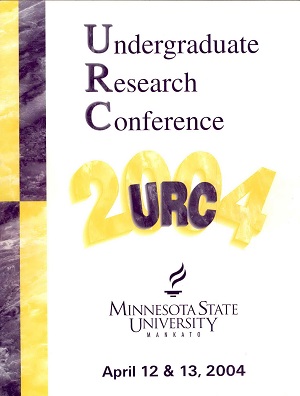Selectivity of Two Different Artificial Substrates in Collecting Macroinvertabrates
Location
CSU 253/254/255
Start Date
12-4-2004 1:45 PM
End Date
12-4-2004 3:15 PM
Student's Major
Biological Sciences
Student's College
Science, Engineering and Technology
Mentor's Name
Beth Proctor
Mentor's Department
Biological Sciences
Mentor's College
Science, Engineering and Technology
Description
As part of the Rush River Assessment Project, benthic macroinvertebrates (organisms without a backbone that live in water and are visible with the naked eye) were collected from 8 locations using Hester-Dendy and Brick-Scrubby artificial substrates. The sampling sites were in watersheds that varied greatly in land use, vegetation, and topography and water quality. When sampling macroinvertebrates usually only one type of artificial substrate is used. The purpose of our research was to determine if there were major differences between the number and type of macroinvertebrates colonizing the two different types of artificial substrates at the various sampling sites. The substrates were set out and collected three times from May - August 2003. The colonization period ranged between 5-6 weeks. There were appreciable differences in the type and number of macroinvertebrates that colonized the two different artificial substrates at the different sites.
Selectivity of Two Different Artificial Substrates in Collecting Macroinvertabrates
CSU 253/254/255
As part of the Rush River Assessment Project, benthic macroinvertebrates (organisms without a backbone that live in water and are visible with the naked eye) were collected from 8 locations using Hester-Dendy and Brick-Scrubby artificial substrates. The sampling sites were in watersheds that varied greatly in land use, vegetation, and topography and water quality. When sampling macroinvertebrates usually only one type of artificial substrate is used. The purpose of our research was to determine if there were major differences between the number and type of macroinvertebrates colonizing the two different types of artificial substrates at the various sampling sites. The substrates were set out and collected three times from May - August 2003. The colonization period ranged between 5-6 weeks. There were appreciable differences in the type and number of macroinvertebrates that colonized the two different artificial substrates at the different sites.




